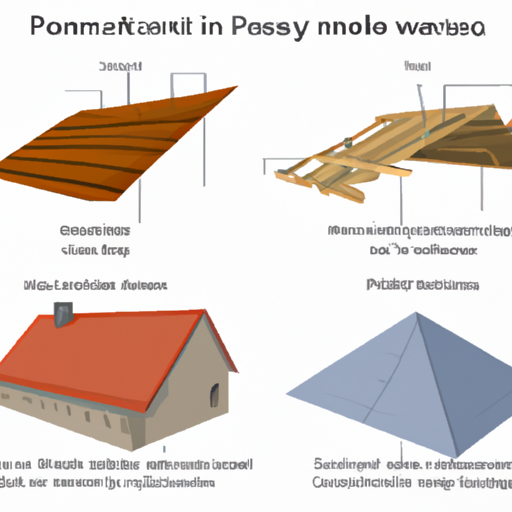Understanding the Basics of Roof Construction: A Step-by-Step Guide
Understanding the basics of roof construction is crucial for anyone involved in building or renovating a property. A well-constructed roof not only protects a building from the elements but also adds to its overall aesthetic appeal. Whether you are a homeowner, contractor, or architect, having a comprehensive understanding of roof construction is essential to ensure a successful project.
The first step in understanding roof construction is familiarizing yourself with the various components that make up a roof. These include the roof deck, underlayment, roofing materials, flashing, and ventilation system. The roof deck, typically made of plywood or oriented strand board (OSB), provides the structural base for the roof. It needs to be properly installed and adequately supported to ensure the roof’s stability.
Next is the underlayment, which acts as a barrier between the roof deck and the roofing material. It helps to protect the roof deck from water infiltration and serves as an additional layer of insulation. Common types of underlayment include asphalt-saturated felt and synthetic materials like synthetic underlayment or rubberized asphalt.
Choosing the right roofing material is crucial for both functionality and aesthetics. There are various options available, including asphalt shingles, metal roofing, clay or concrete tiles, and slate. Each material has its own advantages and disadvantages, so it’s essential to consider factors such as durability, cost, climate suitability, and architectural style when making a decision.
Flashing is another critical component of roof construction. It is used to create watertight seals around roof openings, such as chimneys, vents, skylights, and valleys. Flashing is typically made from metal, such as aluminum or galvanized steel, and needs to be properly installed to prevent water infiltration and potential damage to the roof’s structure.
A well-designed and correctly installed ventilation system is essential for a healthy roof and overall building. Adequate ventilation helps to prevent the accumulation of moisture and heat, which can lead to roof decay and higher energy costs. Roof ventilation typically consists of intake vents, such as soffit vents, and exhaust vents, such as ridge vents or turbine vents.
Understanding the basics of roof construction is only the beginning. It’s important to work with experienced professionals who can provide expert guidance and ensure that all the necessary steps are taken to construct a durable and functional roof. By investing time and effort into understanding the intricacies of roof construction, you can make informed decisions, avoid costly mistakes, and enjoy the benefits of a well-built roof for years to come.
Essential Factors to Consider in Roof Construction: Materials, Designs, and Techniques
When it comes to roof construction, there are several essential factors to consider in order to ensure a durable and efficient design. From materials to designs and techniques, each element plays a crucial role in the overall quality and longevity of the roof. Here is a comprehensive guide that covers everything you need to know about these key aspects of roof construction.
Materials
The choice of materials is one of the most important considerations in roof construction. Common options include asphalt shingles, metal roofing, clay or concrete tiles, and slate. Each material offers distinct benefits and drawbacks in terms of cost, longevity, resistance to weather elements, and aesthetic appeal. It is essential to consider the climate conditions of the area and assess the desired lifespan and appearance when selecting the appropriate roofing material.
Designs
The roof design not only contributes to the overall aesthetic appeal but also affects the functionality and performance of the structure. There are various designs to choose from, such as gable, hip, flat, gambrel, and mansard roofs. Factors to consider when selecting the design include the architectural style of the building, the climate conditions, and the desired interior space. Each design has its own advantages and disadvantages, so it is crucial to understand how each will impact the overall structure.
Techniques
The construction techniques employed in roof installation greatly influence the quality and durability of the finished product. The correct installation of underlayment, proper flashing, effective drainage systems, and appropriate sealing are just a few of the techniques that must be carefully implemented. It is essential to hire experienced and skilled professionals who are well-versed in these techniques to ensure a structurally sound and long-lasting roof.
In conclusion, considering essential factors such as materials, designs, and techniques is crucial in roof construction. Proper selection and implementation of these elements will result in a durable, efficient, and visually appealing roof that can withstand the test of time and weather conditions. By investing in the right materials, choosing a suitable design, and employing proper techniques, you can achieve a roof that not only protects your property but also enhances its overall value.



